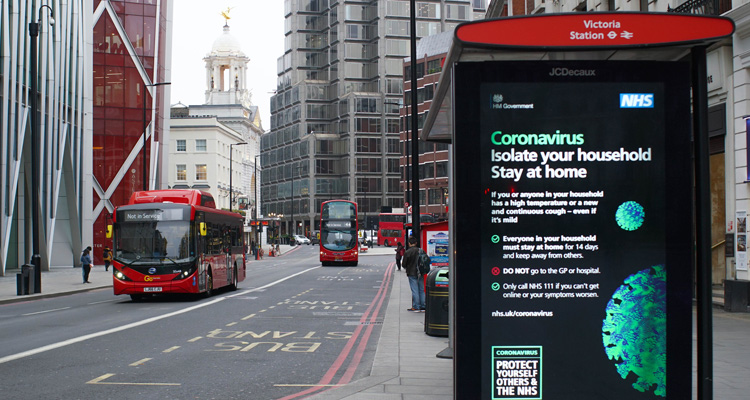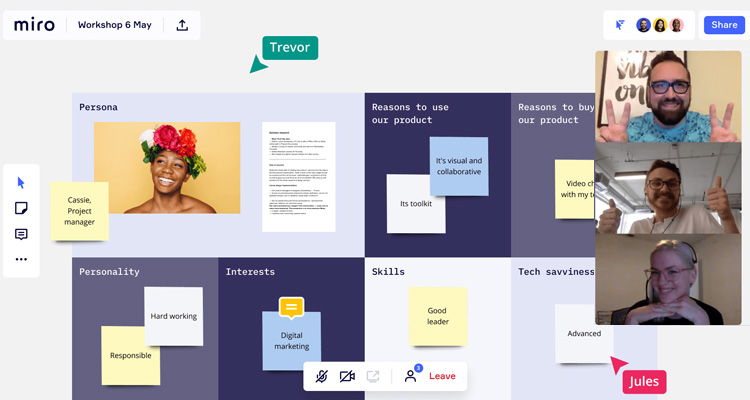Even when there were growing signs of a second wave of Coronavirus, the UK Government continued its campaign to get us “back to work”. Now, work is something you do, not where you do it, and it’s clear their focus was more about supporting city-centre economies than the wellbeing of those urged back onto public transport and into crowded offices.
Unfortunately, many employers also became fixated on a return to normality and an office full of staff until the Government finally saw sense and performed yet another U-turn. So the advice is now to work from home if you can regardless of Covid-19 tier status. I fear when this advice changes employers will undoubtedly start uging their staff to return to the office.

But this fixation on where people work is misguided. The “new normal” isn’t arriving tomorrow, next month, even this year. Coronavirus is going to be with us in one form or another for the next year or more.
Estimates are that a vaccine (assuming one is found and tested successfully) could still be years (plural) away. A mass immunisation programme could take months before the UK population can go back to pre-Covid normality. So-called herd immunity would take years to achieve at today’s infection rates, and evidence is emerging that immunity may only be short-lived.
In short, for the foreseeable future, our lives will consist of infection rates spiking up and down, local lockdowns, stipulations on those we can socialise with, travel restrictions, quarantine periods and mask-wearing.
Rightly or wrongly, the Government has prioritised economic activity (schools and offices) over social activity (theatres and family visits). Whilst this may be sound macroeconomic judgement, at a human level telling people they should go to the office but can’t see their family and friends is not good politics. Even more so with Christmas fast approaching and opportunities for socially distanced gatherings outdoors disappearing.
Employers need to avoid getting mixed up in this mess by placing decision making about where to work in the hands of their employees (most of whom favour a blended approach once it is safe to do so).
Instead of trying to get everyone back into the office, they should be exploring how they can improve and optimise the experience of remote working for every employee. Having worked for more than five years with permanently remote team members, I have a few suggestions.
Improve communication
The social distancing required for a Covid Secure workplace means only 30-50% of the workforce will be able to come into the office at the same time, so there will always be colleagues joining remotely.
Have you established guidance on how to run an online meeting? Should all video cameras be on, for example? So much of our communication is visual, how can you check people understand you if you can’t see them?
Are you using the best video conferencing solution for your business? Does everyone have a video camera? Do your meeting rooms have a central camera so that those joining online can see everyone in the room and any whiteboards or flipcharts you may use?
Sound quality is critical to any remote meeting, so invest in decent headsets for those joining online and a proper audio solution in your meeting rooms, not the built-in microphone on a colleague’s PC.
If a member of staff is struggling with a slow home internet connection, maybe you should pay for them to upgrade to fibre? Sounds expensive? What value do you place on them being able to actively participate in meetings for the next twelve months or more?
Improve collaboration
The simple law of averages suggests that if your office is in a busy urban centre at some point, someone who has been into your office will test positive and you’ll have staff isolating for fourteen days and a deep clean.
Putting aside the worry this will cause those employees and their families; there’s also a loss of shared knowledge. Overnight all the documents on your desk are behind a locked door. All the great ideas from your last campaign brainstorm session are on a whiteboard you can’t see.
Investing in online tools which facilitate collaboration will ensure that your institutional knowledge is accessible from anywhere at any time. One product which has proved it’s worth for me over the last few months is Miro an online collaborative whiteboard tool.
Miro essentially gives you and your team members an infinite canvas to draw on, stick virtual Post-It notes on – basically everything you would do on a real whiteboard. The obvious benefit is that anyone can contribute wherever they happen to be, perfect for distributed teams.

On top of this, it has additional functionality and templates built-in for kanban boards, business model generation, user journey designs, ideation workshops and more. Every team member can collaborate regardless of location, and you still have access to this information anytime, anywhere – even when your office is suddenly out of bounds.
With colleagues working around the school run, childcare or spreading their hours over longer days, work can’t always be time-specific. Replacing online meetings with a status update email, or even better using an asynchronous messaging platform like Slack means information is still being shared, colleagues are supported, and teams have complete visibility of communications.
We have Slack channels set up for different projects and functional areas with membership limited to those working in each of those areas. Of course, everyone has access to channels for the whole team to share ideas, ask questions and indulge in some virtual office banter. The value of this system was immediately apparent when I came back from holiday last week. In a matter of minutes, I could scan over the discussions in these channels, and I’m instantly up-to-date, no status meetings required!
Improve mental health
Many employers cite the mental health benefits for their employees as a driver for returning to the office. Whilst this is undoubtedly true, I can’t help thinking that when opportunities for social connection are in short supply due to Covid-19 restrictions, employees would prefer those with family and friends over their work colleagues.
Nonetheless, there are ways you can make sure your teams are taking care of their mental health without them trooping into the office. The first and most obvious is to check in with them regularly, above and beyond your normal one to one calls. A call to informally share what each team member has achieved this week is a great way to do this and reassures the group that they are still delivering results.
In the world of agile software development, we have regular sprint retrospectives to discuss what’s working well and what can be improved. We use the feedback from these sessions to refine and improve our processes and ways of working. I’d recommend this as a good discipline for all teams as it gives remote workers the chance to identify issues which mean they can’t contribute to the team as effectively.
With colleagues now literally living at the office there’s a real temptation to work longer hours than you would if you commute to a physical office. Microsoft’s employees are sending 52% more emails in the evening after moving to home working.
Some of this will undoubtedly be people working around childcare and other responsibilities. Still, we should keep a close eye on employee’s working hours and encourage them to maintain a healthy work-life balance. We should also lead by example and make sure we’re looking after our mental health – supporting a remote team can be hard work!
Finally, encourage your teams to be on the lookout for warning signs that someone is struggling. If messages stop appearing, someone stops contributing to meetings; then we need to reach out to them and offer support. It can be a difficult conversation, but Mind, the mental health charity, has useful advice and resources.
An investment for Covid-19 and beyond
As much as some politicians, employers and city centre landlords wish for it, I don’t see a return to the majority of white-collar employees commuting to their offices five days a week. All the research I have seen recently points to employees preferring a blended approach, working a couple of days a week in the office and the rest from home.
So any investment you make in improving how your teams work remotely isn’t “temporary” until we rid ourselves of Covid-19 but an investment in the future of your business and your workforce.
The naysayers will tell you that remote working is inefficient, that it can’t be done. But I’ve managed teams with developers, testers and analysts scattered across multiple countries and time zones and those remote teams can thrive, be creative and contribute to the success of your business just as much as any office-based team.
Covid-19 presents a unique opportunity to re-imagine the world of work for the 21st century, one that is better for employees, for our communities, for the environment and for the businesses we serve. As managers, leaders and employers, we need to focus on shaping that future today rather than pining for a return to a way of working that was already well past its expiry date.
